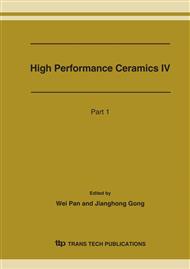p.1849
p.1853
p.1856
p.1859
p.1862
p.1865
p.1868
p.1872
p.1874
Composition and Properties of the LZS Glass-Ceramics Used as Anodic Bonding Material
Abstract:
Info:
Periodical:
Pages:
1862-1864
Citation:
Online since:
April 2007
Authors:
Price:
Сopyright:
© 2007 Trans Tech Publications Ltd. All Rights Reserved
Share:
Citation:


